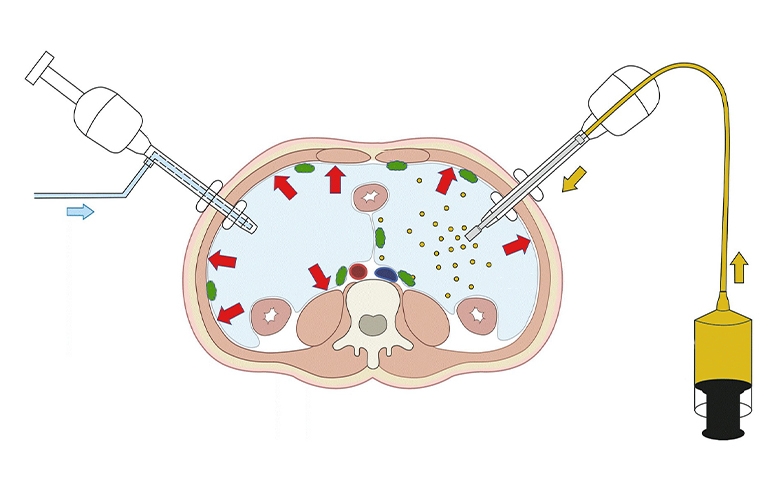
In intra-abdominal cancers treated with hot chemotherapy, PIPAC, or "pressure hot chemotherapy application", which puts an end to the problem of inability to reach the natural curves of the body, helps to control the tumor and prolong the life span in the ideal patient group.
In Which Diseases Is PIPAC Used?
The "peritoneal layer", which completely surrounds the abdominal wall and also covers the abdominal organs, is an important structure that concerns the entire abdominal region. The most common types of cancer in the peritoneal area; Pseudomixoma peritonei, which is the cancer of the peritoneum itself, is listed as cancers of the stomach, appendix, large intestine, rectum, ovary, and pancreas.
These cancers spread to the peritoneum in various ways; In the neighborhood, metastases may occur via spillage, blood or lymph into the abdominal cavity. As a result, the tumor can spread like a handful of bulgur.
With the progression of tumors spreading to the peritoneum, tumoral deposits covering all intra-abdominal organ surfaces are formed and gradually grow. During this time, fluid accumulation called ascites may develop in the abdomen. The presence of acid indicates that the table is getting worse.
In this case, the benefit of intravenous chemotherapy, defined as systemic chemotherapy, is greatly reduced. At this stage, if the patient cannot be treated with cytoreductive surgery (CRS), which means exfoliating the tumor peritoneum, and HIPEC (hot chemotherapy into the abdomen), PIPAC (pressurized aerosol chemotherapy) helps to control the tumor and prolong its life span.
In the treatment of these patients, the peritoneal membrane is completely peeled and removed in the first stage. The surgeon destroys all accessible tumors either surgically or by cauterization. After cleaning, cancer-destroying chemotherapy drugs heated up to 43 degrees are given directly into the abdomen with drains. In other words, cytoreductive surgery + HIPEC is applied with open surgery. In cases where this attempt cannot be made, PIPAC is activated.
With the decrease in intra-abdominal pressure due to the emergence of ascites and tumoral masses in the abdomen, the functioning of the lungs and heart relaxes and the tumor load becomes controllable as it decreases. The patient's survival time can also be extended. Life expectancy of one to two months can be increased 10 times. However, for this, the patient's general health status, cell structure, type and genetic structure of the tumor are of great importance.
How is PIPAC Implemented?
In the PIPAC method, chemotherapy drugs are administered intraperitoneally similar to standard chemotherapy, but this time their doses are 1/10 compared to those given intravenously. In this way, the cytotoxic effect of cancer-killing drugs on healthy cells is reduced, and a high level of effectiveness is provided.
In this treatment performed laparoscopically, two incisions, one 1 cm and the other 0.5 cm, are entered into the abdomen. The drug to be given is selected according to the type of organ from which the tumor originates. The high-pressure chemotherapy drug administered with a pen-like (Kapnopen) apparatus through the trocars entering the abdomen is aerosolized and spread all over.
This change in the way the drug is administered increases the patient's gain. During the procedure, landmarks are placed in certain places, so that the treatment can be repeated after 6 weeks if necessary.
This treatment can be done up to 7-8 or even 10 sessions. In the third or fourth application of the treatment, it can be seen that almost all of the tumor has disappeared at the marked points.

